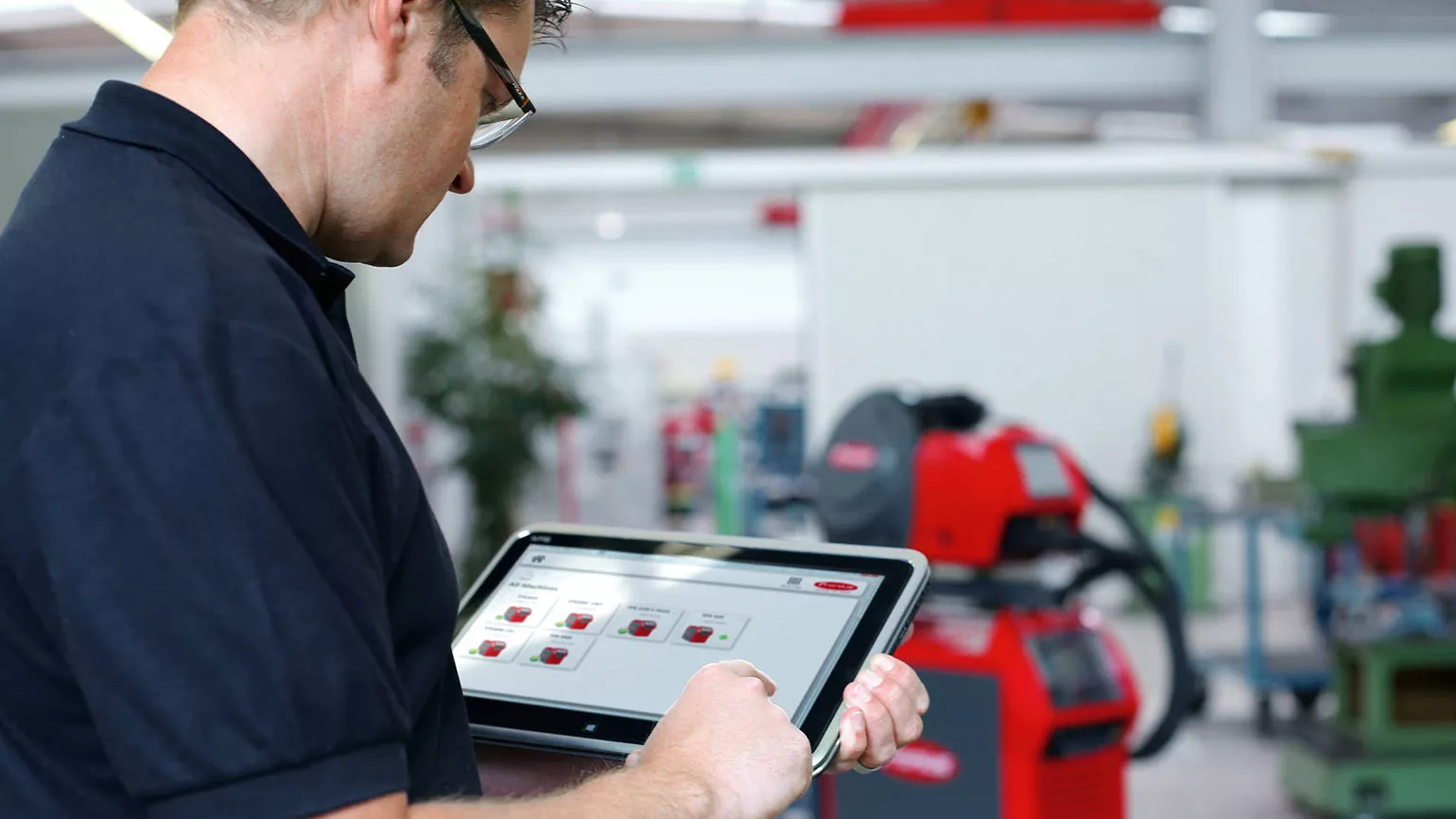Successfully leveragingdata assets
From a metalworking workshop to a global player, worldwide PALFINGER stands for the most innovative, reliable and cost-effective lifting solutions for use on commercial vehicles and in the maritime field. The company, which is based in the Austrian municipality of Bergheim near Salzburg and was founded in 1932, has since become a multinational group with manufacturing and assembly locations in Europe, North and South America and Asia as well as over 5,000 sales and service centres in over 130 countries. Its core product is the truck loader crane. PALFINGER is the world market leader in this segment with close to 150 models and a market share of more than 30 percent.
In order to strengthen its position further, the lifting system manufacturer follows a clear strategy: work processes are digitised and optimised from start to finish – including in welding production at the production site in the Upper Austrian municipality of Lengau. Here, PALFINGER mainly utilises automatic systems in addition to manual workstations. The variety of versions poses a huge challenge: the company welds up to 70 different products on one robot cell, whereby individual workpieces have up to 50-metre weld seams with very different seam geometries and welding positions. Setting and adjusting the parameters used to take a lot of time, for example, the data had to be downloaded from a power source onto a USB flash drive or laptop and then imported into the target system. The WeldCube documentation and data analysis system from Fronius therefore represented a considerable improvement for PALFINGER.
EASY IMPLEMENTATION FOR QUICK SUCCESS
Shortly after implementation and without any extensive preparatory work, the system enabled comprehensive collection of the data provided by the digital Fronius power sources. PALFINGER was able to document and edit target data such as welding jobs right from the get-go. In addition, functions are available for creating automatic backups of the device software and the settings of the connected power sources, or for installing updates. PALFINGER simply had to integrate the welding systems and the WeldCube hardware into the company network. The installation was carried out by Fronius specialists as part of the delivery service. PALFINGER initially networked four manual workstations and three automated welding systems with the aid of the WeldCube. “This only required a few minutes of effort in terms of software both for the latest MIG/MAG welding solution from Fronius, the TPS/i, and the predecessor version, the TPS,” reports Strobl. In terms of hardware, the devices in the TPS/i family are already prepared for connection to the WeldCube. It may be necessary to upgrade the communication hardware of older digital power sources in advance and Fronius has corresponding solutions for this. PALFINGER is therefore able to gradually network all the power sources located in Lengau.
COST TRANSPARENCY INCLUDED
In doing so, the company is also gaining access to the extensive functions of the WeldCube’s integrated component management system. To fully exploit the visualisation and analysis options, the workpiece, and the weld seams to be created must be uniquely assigned. This allows the user to display the chronological progression of the welding parameters on a laptop or tablet, down to component or seam level, and accurately determine whether the actual values lie within the specified limits. The power sources also report values such as wire and shielding gas consumption to the WeldCube software – this enables continuous process and cost analysis to be performed. “This allows us to take the optimisation of our processes to the next level. Our design engineers have begun assigning unique seam IDs to the weld seams on the design drawings,” explains Johann Strobl. “In future, we will assign a machine-readable code to our workpieces, so we will no longer need to manually enter the serial number or workpiece ID.”
In the medium term, PALFINGER wants to automatically supply its welders with the right data at the right time in the right place – and on a component and seam-specific basis. The WeldCube offers the ideal basis for this with all the necessary functions. At the same time, this will lay the foundations for wider-reaching standardisation, as Strobl explains: “We want to use the system to create a central welding job database.” The welding jobs stored there will be prepared by experienced professionals, qualified and continually developed. They can be transferred to the connected welding systems and robot systems via the WeldCube, across factories or even sites. This makes a lot of manual work redundant: “This puts us in a position to maintain our high level of quality, despite continuously rising flexibility requirements,” concludes Johann Strobl.
ON-SITE VERSION OF THE WELDCUBE IN BETA TESTING
Not only was PALFINGER one of the first companies in the industry to create the necessary conditions for centralised parameter management, documentation and analysis of welding processes with the aid of the WeldCube in 2015, it is also one of the beta users of the ‘on premises’ version of the system introduced in 2017. This extension, which will be available from the start of 2018, is a pure software solution that can be integrated directly into the IT infrastructure available on site. This and the improved, and still available hardware version also offer numerous new features such as a dashboard that allows custom compilation of the information displayed.
clear strategy
PALFINGER, the leading international lifting system manufacturer follows a clear strategy when it comes to welding technology: the WeldCube plays a significant role in driving forward the digitisation and optimisation of work processes.
“I’m impressed that we were able to transfer the parameters and welding jobs directly from one power source to another with the WeldCube. In comparison to the traditional process, this saves us an incredible amount of time – particularly when the same parameter record needs to be transferred onto several target systems.”
Johann Strobl, Welding Coordinator responsible for the seriesproduction of crane systems at the Lengau site.

